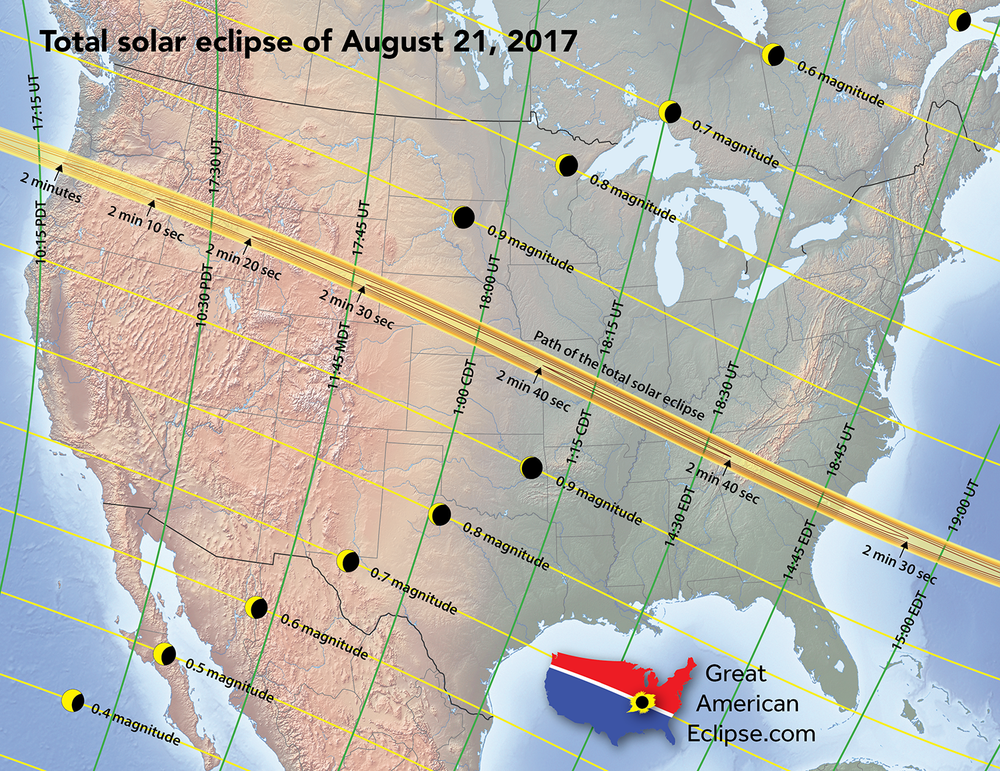 Welcome to the Carnival of Space #395! We’re so glad you’re here!
Welcome to the Carnival of Space #395! We’re so glad you’re here!
The Carnival of Space is a weekly gathering of spacer bloggers submitting their articles to a volunteer ‘host’ blogger. Yep, we’ve been at it for almost 400 weeks!
Do you have a space-related blog? Perhaps you’d like to participate too. You can you know. All you gotta’ do is go here and follow the directions.
If you ever need any help thereafter, please just ask. I’ll do everything I can to help and I bet most of the other members will too!
So now, On With The Show!
‘Sky Safari’ and Other Travel Adventures
Pam Hoffman | Everyday Spacer
We heard you and we’re acting on your requests! First up, take 3 days & nights to learn your telescope, scopes in general and the night sky (@ that time of the year) next April 2015. Leverage a single weekend for a lifetime of fun; under a dark sky! We’ll start setting up other cool events for you later in the year. Take a look!
Scientists Mull How to Find Life on Europa
Mark Wittington | examiner.com
Ever since the Europa mission had been given the official nod of approval by NASA, scientists have been giddy with excitement at the prospect of exploring a new world where life might reside. The likely model for the mission is the Europa Clipper, which will orbit Jupiter and fly by the moon multiple times. According to a Tuesday story in the New Scientist, researchers are…
Cruz NASA Space Hearings Highlight Mars vs. Moon Controversy
Mark Wittington | examiner.com
The Washington Post noted on Tuesday that the recent hearings concerning the future of space exploration and commercial space held by Sen. Ted Cruz’s Subcommittee on Space, Science, and Competitiveness highlighted a persistent conflict ongoing in space circles. The question of where to next send humans into space, Mars or back to the moon has proven to be a vexing one. Apollo astronaut Buzz Aldrin was in the…
NASA is Planning the Next Round of Planetary Missions
Mark Wittington | examiner.com
While attention has been focused on a multi-billion dollar mission to Jupiter’s moon Europa, NASA is planning a number of new planetary missions. Most are grouped under the Discovery Program, small-scale missions with a cap of $450 million, and the New Frontier Program, which has a cap of $1 billion, according to a Tuesday story in Spaceflight Now. Meanwhile, Space News reports that the space agency is zeroing in on…
Not Much New Happened at Ted Cruz’s First NASA Space Hearing
Mark Wittington | examiner.com
Sen. Ted Cruz, R-Texas conducted his first hearing as chairman of the Senate Subcommittee on Space, Science, and Competitiveness on Tuesday. He and several other senators, including ranking Commerce Committee member Sen. Bill Nelson, D-Florida, questioned two panels of witnesses on a variety of space topics, ranging from sending humans to Mars to how best to enable commercial space operations going forward.
Astrobotic and HAKUTO to Share a Ride to the Moon for the Google Lunar XPrize
Mark Wittington | examiner.com
The Google Lunar XPrize announced on Monday that two competitors for the $20 million purse for the first private group to land a rover on the lunar surface and do a number of predetermined tasks have teamed up to share a ride to the moon. Astrobotic, a group in Pittsburgh, PA, and HAKUTO, a Japanese team, will use the same Falcon 9 launch vehicle to deliver their rovers to the lunar surface. At that point, it will be a race to see which rover will…
Growing Black Holes: Hunting for the First Seeds
Mar Mezcua | Chandra X-Ray Observatory
We are pleased to welcome Mar Mezcua as a guest blogger today. She led the study that is the subject of our latest press release, about an intermediate mass black hole. Mar is from Balaguer (Lleida, Spain) and studied Physics in the University Autonomous of Barcelona and in the University of La Laguna, where she also specialized in Astrophysics. She completed her PhD at the Max-Planck-Institut fuer Radioastronomie (Bonn, Germany) in 2011 and then moved to the Instituto de Astrofisica de Canarias (Canary Islands, Spain) as a postdoctoral researcher. She is currently a postdoctoral researcher at…
NASA’s Chandra Finds Intriguing Member of Black Hole Family Tree
Megan Watzke, CXC | Chandra X-Ray Observatory
A newly discovered object in the galaxy NGC 2276 may prove to be an important black hole that helps fill in the evolutionary story of these exotic objects, as described in our latest press release. The main image in this graphic contains a composite image of NGC 2766 that includes X-rays from NASA’s Chandra X-ray Observatory (pink) combined with optical data from the Hubble Space Telescope and the Digitized Sky Survey (red, green and blue). The inset is a zoom into the interesting source that lies in one of the galaxy’s spiral arms. This object, called NGC 2276-3c, is seen in radio waves (red) in observations from the…
NASA’s Dawn Eyes Two Mysterious White Dots on its Approach to Ceres
Mark Wittington | examiner.com
As the ion drive propelled Dawn, NASA’s asteroid explorer, makes its final approach to the dwarf planet Ceres, scientists are in high excitement due to the detection of not just one, but two bright dots inside an impact basin. Io9, in a Wednesday story, posits theories that the dots are either evidence of volcanism or else are impact craters that have exposed ice deposits beneath a layer of dust. But as the Planetary Society noted…
Pat Robertson Attacks NASA Mars Exploration, Says God Did Not Create Aliens
Mark Wittington | examiner.com
According to a Wednesday story in Salon, Pat Robertson, a televangelist and former presidential candidate, took to the airwaves on his “700 Club” and choose to inveigh against NASA in general and the exploration of Mars in specific. He seems to have it on good authority that God would not choose to create life on any other world but the Earth. His supposition is in the distinct minority among mainstream theologians though perhaps not of fundamentalist Christians like Robertson.
Destellos desde Vega: Los mini-Neptunos podrían convertirse en mundos habitables
Fran Sevilla | Vega 0.0
A new study of astronomers at the University of Washington suggests that the combination of stellar radiation and tidal forces could transform mini-Neptunes into super-Earths. The article is written in Spanish.
Exploring an Alien Sea: NASA Designs Submarine to Send to Titan
Paul Scott Anderson | The Meridiani Journal
Who wouldn’t want to go explore an alien sea? It seems that NASA would certainly like to, and the agency has unveiled a new submarine design to hopefully do just that one day. The submarine would be sent to Saturn’s largest moon, Titan, to dive into one of the large liquid methane seas on the moon’s frigid surface; such a mission idea may sound like science fiction, but it’s not, and would be the first ever to explore a sea on another world which is both…
Getting Closer! New Horizons Sees Two of Pluto’s Smaller Moons for First Time
Paul Scott Anderson | The Meridiani Journal
The New Horizons spacecraft, on course for a historic encounter with Pluto this summer, is now close enough to see two of its smaller moons for the first time. The new views also come 85 years after the discovery of Pluto by astronomer Clyde Tombaugh on Feb. 18, 1930.
Alliance for Space Development to Push Reusable Spacecraft and Space Settlements
Mark Wittington | examiner.com
The Alliance for Space Development, consisting of a number of space advocacy groups such as the National Space Society, the Space Frontier Foundation, and the Mars Society, was formed as a result of a closed-door meeting recently. The news was received with puzzlement in some quarters and outright scorn in others. However, Space News reported Thursday that the ASD has hit the ground running and is pushing for a number of legislative items and other initiatives designed to further the cause of space development and settlement.
NASA and ESA Prove that Super Massive Black Holes Shape Their Host Galaxies
Brian Wang | Next Big Future
NASA’s Nuclear Spectroscopic Telescope Array (NuSTAR) and ESA’s (European Space Agency) XMM-Newton telescope are showing that fierce winds from a supermassive black hole blow outward in all directions — a phenomenon that had been suspected, but difficult to prove until now.
This discovery has given astronomers their first opportunity to measure the strength of these ultra-fast winds and prove they are powerful enough to inhibit the host galaxy’s ability to make new stars.
Supermassive black holes blast matter into their host galaxies, with X-ray-emitting winds traveling at up to…
Leonard Nimoy who Played Spock on Star Trek Has Died
Brian Wang | Next Big Future
Leonard Nimoy, the actor best known for playing the emotionless, pointy-eared Spock on the “Star Trek” television series, died on Friday. He was 83.
His granddaughter, Dani, confirmed the death on Twitter. She called him “an extraordinary man.” Nimoy revealed a year ago that he had been diagnosed with…
NASA Dawn’s Spacecraft Will Insert into Dwarf Planet Ceres Orbit Late Next Week and then Spiral Down for 20 Months
Brian Wang | Next Big Future
NASA Dawn’s spacecraft will insert into dwarf planet Ceres orbit late next week and then spiral down for 20 months. NASA’s Dawn spacecraft will be in orbit around Ceres in one more week. NASA has released a photo of Ceres
Dwarf planet Ceres continues to puzzle scientists as NASA’s Dawn spacecraft gets closer to being captured into orbit around the object. The latest images from Dawn, taken nearly 29,000 miles (46,000 kilometers) from Ceres, reveal that…
Observer’s Guide – March 2015
Allen Versfeld | Urban Astronomer
Urban Astronomer’s guide to what’s up in Southern Skies for March 2015
And that is what we have so far. I’ll update for a little longer then we want to start looking for Carnival of Space #396! Thank you for everything – participants as well as visitors. We are very grateful for your continued help and support!
Image used by permission: Great American Eclipse.com







































Pingback: Space-for-All at HobbySpace » Carnival of Space #395 – Everyday Spacer
Pingback: Carnival of Space 395 | Innovation Revealed
Pingback: Carnival of Space #395 | Phenomenica
Pingback: Carnival of Space #395 | WRAC